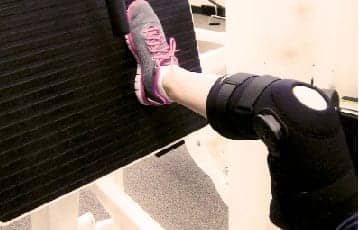About one in five US residents—19%—reported some level of disability in 2005, according to a recent Census Bureau report. These 54.4 million Americans are roughly equal to the combined total populations of California and Florida.
Both the number and percentage of people with disabilities were higher than in 2002, the last time the Census Bureau collected such information. At that time, 51.2 million, or 18%, reported a disability.
Among those with a disability, 35 million, or 12% of the population, were classified as having a severe disability, according to Americans With Disabilities: 2005.
Nearly half (46%) of people age 21 to 64 with a disability were employed, compared with 84% of people in this age group without a disability. Among those with disabilities, 31% with severe disabilities and 75% with nonsevere disabilities were employed. People with difficulty hearing were more likely to be employed than those with difficulty seeing (59% compared with 41%).
A portion of people with disabilities—11 million age 6 and older—needed personal assistance with everyday activities, such as getting around inside the home, taking a bath or shower, preparing meals, and performing light housework.
Other important findings:
Among people 15 and older, 7.8 million (3%) had difficulty hearing a normal conversation, including 1 million being unable to hear at all. Although not part of the definition of disability used in the report, 4.3 million people reported using a hearing aid.
Roughly 3.3 million people, or 1%, age 15 and older used a wheelchair or similar device, with 10.2 million, or 4%, using a cane, crutches, or walker.
Nearly 7.8 million people age 15 and older had difficulty seeing words or letters in ordinary newspaper print, including 1.8 million being completely unable to see.
More than 16 million people had difficulty with cognitive, mental, or emotional functioning. This included 8.4 million with one or more problems that interfere with daily activities, such as frequently being depressed or anxious, trouble getting along with others, trouble concentrating, and trouble coping with stress.
The chances of having a disability increase with age: 18.1 million people 65 and older, or 52%, had a disability. Of this number, 12.9 million, or 37%, had a severe disability. For people 80 and older, the disability rate was 71%, with 56% having a severe disability.
Among people 25 to 64 with a severe disability, 27% were in poverty, compared with 12% for people with a nonsevere disability and 9% for those without a disability.
Parents reported that 228,000 children under age 3, or 2%, had a disability. Specifically, they either had a developmental delay or difficulty moving their arms or legs. In addition, there were 475,000 children 3 to 5 years, or 4%, with a disability, which meant they had either a developmental delay or difficulty walking, running or playing.
There were 4.7 million children 6 to 14, or 13%, with a disability. The most prevalent type was difficulty doing regular schoolwork.
The Survey of Income and Program Participation produces national-level estimates for the US resident population and subgroups, and allows for the observation of trends over time, particularly of selected characteristics such as income, eligibility for and participation in transfer programs, household and family composition, labor force behavior, and other associated events.
For further detailed tables on disability, click here
Source: US Census Bureau
[Source: Medical News Today]



